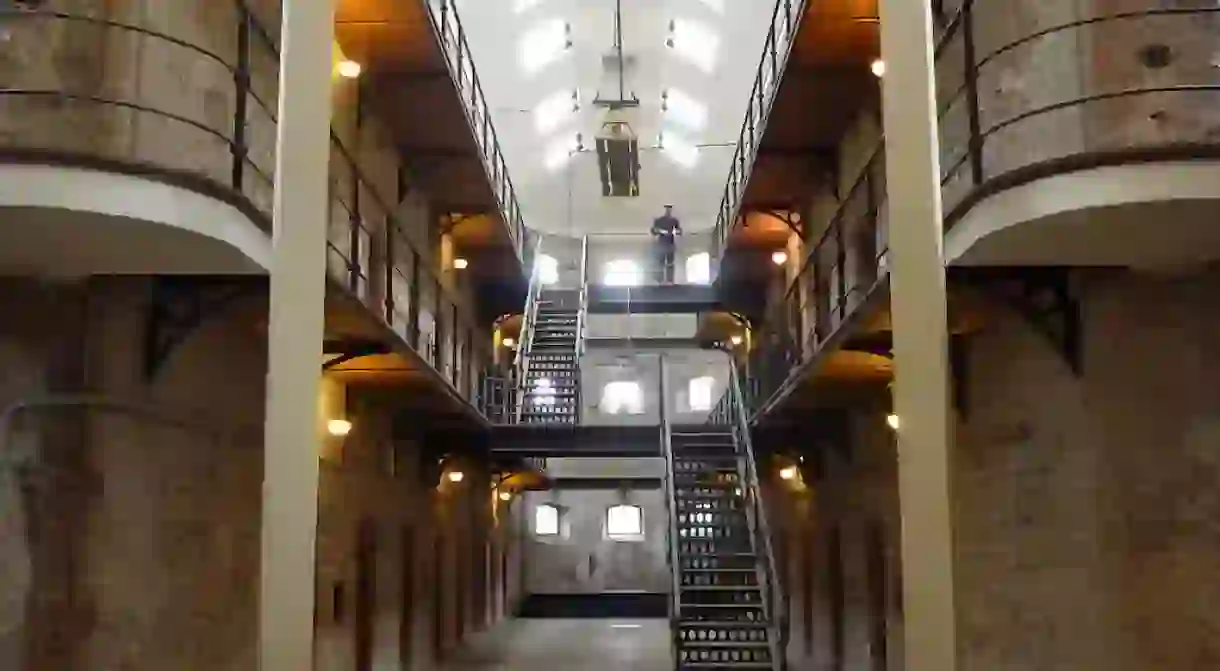The Top Museums to Visit in Cork, Ireland

Dublin may be home to many of the best-known Irish museums, but Cork holds a rich and idiosyncratic cultural past that will charm any visitor. Trace the city’s history through deep dives into themes like rebellion and incarceration, or look into the future with the interactive exhibitions at the Lifetime Lab in the Old Cork Waterworks. Art lovers won’t be disappointed either, from Louis Le Brocquy’s portraits at the Crawford to cutting-edge modern Irish art at the Lewis Glucksman Gallery.
The Crawford Art Gallery
Art Gallery, Building, Opera House

The Crawford Art Gallery is housed in Cork’s former Custom House – an imposing red-brick structure erected in 1724 and a welcome juxtaposition to the modern glass façade of Cork Opera House next door. The building has been augmented many times since, with the most recent extension in 2000 – designed by Dutch architect Erick van Egeraat – bringing an additional exhibition wing for modern art. The impressive permanent collection gives a visual insight into themes that trace the city’s biography, from the life of a ‘merchant prince’ in 18th-century Cork to famine and emigration. Check for upcoming rotating exhibitions before you visit.
Cork Butter Museum
Museum

Even the dairy-averse will find the small but charming Cork Butter Museum a worthwhile diversion from the main tourist trail. Housed in a 19th-century market building in the residential community of Shandon, the museum presents the rarely told story of butter’s importance to the local and national economy. The museum is housed in part of what was once a giant distribution and processing centre for butter being exported to four continents at the height of production in the 19th century.
Cork City Gaol

Cork City Gaol is a sombre and moving museum experience. Although only a 30-minute walk from the city centre, the gaol is enveloped in tranquil and generous grounds. The austere stone structure first opened in 1824 and operated as a prison for 100 years. Countess Markievicz – the first woman elected to the British Parliament, although she did not take her seat – was incarcerated here in 1919 during the Irish War of Independence. The museum is incredibly informative, with the history of incarceration here contextualised within the wider historical and political context. Details of the everyday routes and routines of the prisoners and preserved signatures on the wall enrich the emotional resonance of the experience.
Cork Public Museum
Building, Museum, Park

The imposing Georgian property that now houses the Cork Public Museum was originally built in 1845 by the Beamish family – of brewing fame and fortune – in an area then termed ‘the shrubberies’. In the grounds of the sprawling Fitzgerald Park, this building was purchased by the city corporation for the Cork International Exhibition in 1902 and 1903. The museum holds an impressively diverse range of artefacts, from aesthetics including Cork silver and 18th-century costumes to a rich selection of displays on different aspects of the Irish resistance and path to independence. Visit the museum’s café to take advantage of exceptional views onto the River Lee.
Lifetime Lab at Old Cork Waterworks
Building, Museum
Overlooking the waterworks weir on the River Lee, the Old Cork Waterworks supplied water to the city for centuries but is now home to the Lifetime Lab – an interactive museum experience focused on science and technology. Built from alternating Cork red sandstone and grey limestone, this Victorian building and tapered square tower have now been lovingly restored. Kids will love the exhibits, as well as summer camps and LEGO workshops hosted here as a means of engaging their interest in how the world around them works, and how they can be part of improving it.
Lewis Glucksman Gallery
Art Gallery, Building, Museum, University

The Lewis Glucksman Gallery is a striking modern structure on the lush green campus of University College Cork. Completed by O’Donnell & Tuomey Architects in 2004 and named Best Public Building by the Royal Institute of Architects the following year, the building is a remarkable frame for the art on show. A former banker from New York, Lewis Glucksman settled in Cobh, County Cork and his philanthropic efforts focused on developing Irish-American cultural relations, also establishing Glucksman Ireland House – the centre for Irish and Irish-American studies at NYU. This gallery aims to reach audiences of all different ages through initiatives like their Family Sundays and summer art clubs, where kids go to learn about art and architecture over the summer holidays.













